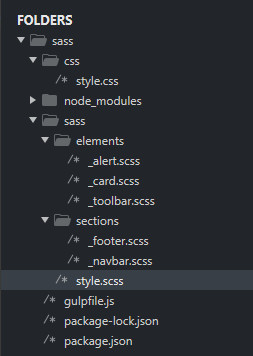Gulp is a toolkit to automate & enhance our workflow. Most of the time, I use gulp for my SASS projects. In this article, I’ll show you how to use gulp to automate SASS to CSS compilation.
First, let’s create a folder named sass and then initialize npm inside the folder.
npm init
Once we’ve our package.json file is ready. We can install the gulp using this command :
npm install --save-dev gulp
Now, we install the other dependencies we’ll use.
npm install sass gulp-sass --save-dev
As we’ve everything installed. It’s time to create gulpfile.js. Then, we’ll add the task compile in the gulpfile.js, which will compile our SASS.
let {gulp, watch, series, src, dest} = require('gulp');
let sass = require('gulp-sass')(require('sass'));
function compileSassFiles(done) {
src("sass/*.scss")
// Apply sass on the files found
.pipe(sass())
// Log errors from the sass
.on("error", sass.logError)
// Destination for the compiled file(s)
.pipe(dest("css"));
done();
}
exports.compile = function (done) {
watch(
'sass/**/*.scss',
{
ignoreInitial: false
},
compileSassFiles
);
}
Notice that, the task will watch for changes in any .scss files, including the files inside sub-directories of sass folder.

Now as we’ve our task is ready, we just have to run it in the terminal :
gulp compile
We’re done! Keep the terminal open, and you’re ready to automate SASS to CSS compilation!

